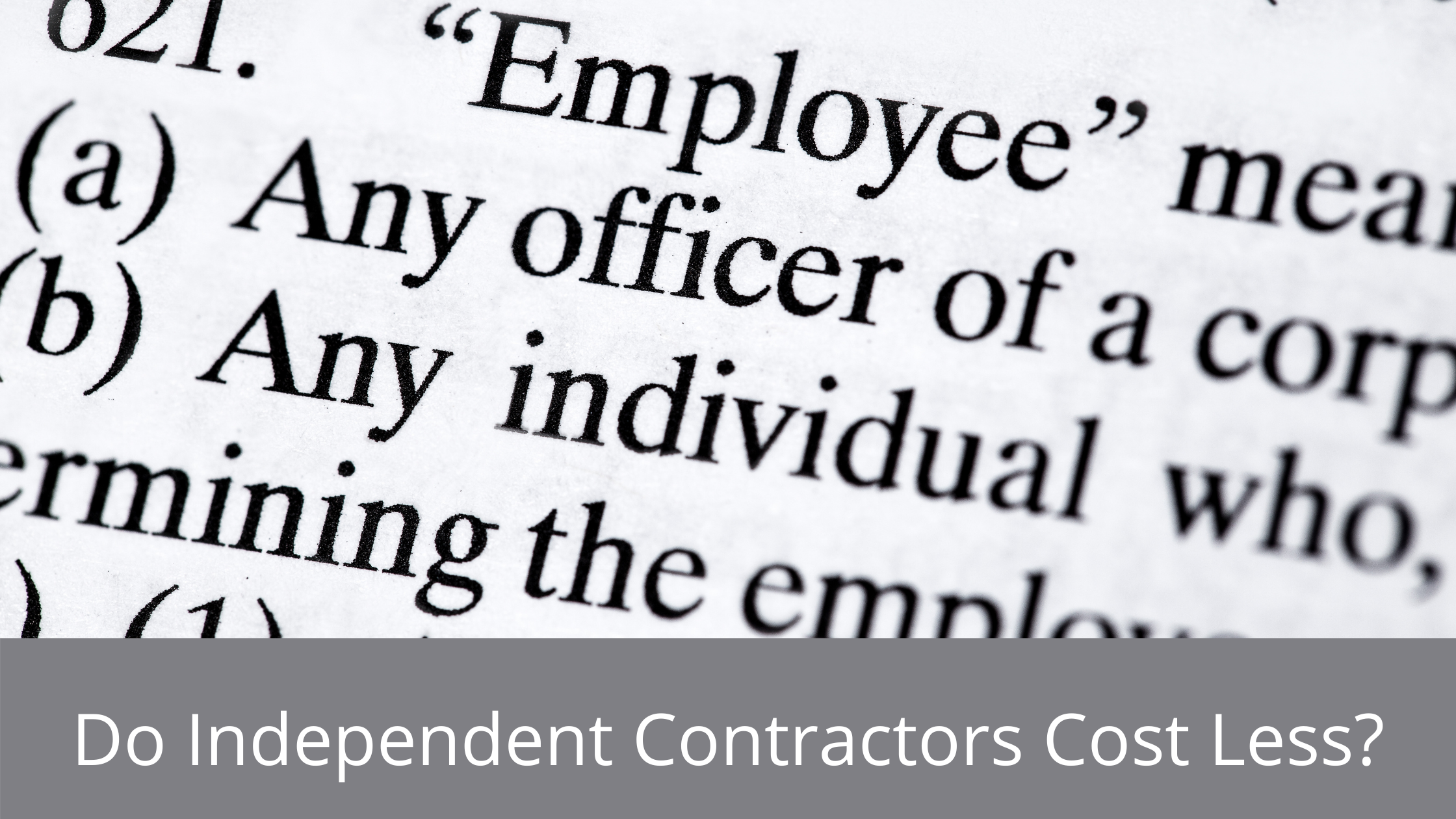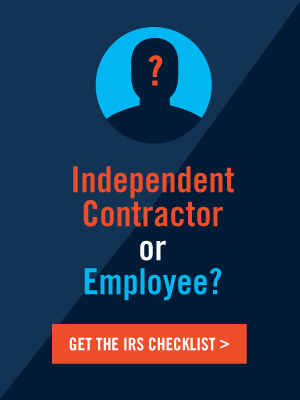California AB 5: The Economics of Independent Contractors vs Employees

California has been the epicenter of the Independent Contractor versus employee / employer relationship for quite awhile. What became known as the “Dynamex test” was the guideline that resulted from CA appellate court’s interpretation of the necessary assessment to determine proper classification. Previously, there were two separate guidelines. The ABC Test used in California, and the IRS test at the Federal level. California legislation AB 5, significantly changed the parameters (ABC test and Dynemex case law), while still considering the IRS when classifying individuals as an independent contractor.
Ride Share Industry
 The ride share industry challenged the legality through the courts, but in late October, a California Appeals Court upheld a ruling that Uber and Lyft must classify their drivers as employees. Less than 2 weeks later, California voters approved a ballot initiative mandating that app drivers in that state will not be presumed “employees” under the law that codified the “ABC test” designed to classify an individual as an “independent contractor.
The ride share industry challenged the legality through the courts, but in late October, a California Appeals Court upheld a ruling that Uber and Lyft must classify their drivers as employees. Less than 2 weeks later, California voters approved a ballot initiative mandating that app drivers in that state will not be presumed “employees” under the law that codified the “ABC test” designed to classify an individual as an “independent contractor.
In California Uber and Lyft have indicated that if they have to hire the drivers as employees they will probably need to pull the service out of the state completely. This seems like a strong reaction to employee classification, but if you look at the labor costs of full time employees vs independent contractors it is easy to understand how classification negatively impacts the gig economic model.
What are the Labor Cost Statistics?
Bureau of Labor Statistics research calculated that employer costs for employee compensation averaged $29.71 per hour. Wages accounted for 69.6% percent. Benefits average 30.4% percent of the total employee cost and they can break down this as such:
Benefit |
Ave Cost /Hour(Percentage of total Compensation) |
| Life, health and disability insurance | $2.62 per hour for (8.8% of total comp) |
| Legally mandated benefits, including Social Security, Medicare, unemployment and workers' compensation | $2.30 per hour (7.7% of total comp) |
| Benefits that include paid leave, vacation, holiday pay, sick days and personal leave | $2.06 per hour (6.9% of total comp) |
| Retirement and savings plans cost employers | $1.32 per hour (4.5% of total comp) |
| Supplemental pay, such as overtime, shift differentials and bonuses | $0.73 per hour (2.5% of total comp) |
What Are Other Costs Factors For Employees?
According to Businessweek Magazine, employers can save up to 30 percent by hiring an independent contractor because they avoid paying payroll taxes, unemployment insurance, workers' compensation and disability, as well as benefits that include pensions, sick days, health insurance and vacation time. Because independent contractors are considered self-employed, they must pay the federal government 15.3 percent for Social Security and Medicare, as well as any state or local taxes themselves. Classifying regular employees as contractors also gives businesses the freedom to evade minimum wage requirements and overtime mandates as well.
Additionally, consider compliance implications for a small business. Keeping employee counts under certain thresholds can avoid additional employment laws which enforce its provisions according to the business employee count counts. For example an employer with 18 employees and 40 Independent Contractors would avoid being subject to the additional administrative reporting and compliance burden of FMLA, COBRA, ACA, and more.
A 30% increase per employee in operating costs is so significant it would cause the question of the company’s ability to be lucrative, unless prices were passed on to the customer. Would the customer still want to use the service? It may drive the price up so high that the demand of the service would significantly decrease or cease.
Are Independent Contractors Worth It?
Employers can see the clear math for using independent contractors. Lowering labor and/or operating costs is something all businesses strive for. But managing independent contractors runs a slippery slope, and getting caught in a misclassification investigation is pretty easy.
For example, let’s say a 1099 worker stops working for you and this person applies for unemployment. The claims examiner will ask about the reason for the financial assistance application. These questions will quickly expose if the individual contributed wages via the employer through withholding taxes into the program and if not, why? The EDD would escalate potential issues to the IRS and/or Labor Commissioner. If this person is determined to be misclassified the employer is liable for:
- Back Tax Pay and Interest
- Tax Penalties for late Tax Payments
- Wage and Hour Violations like Minimum wage, OT and DT
Penalties and back taxes are expensive, but if an employee is determined to be misclassified the financial liability can be worse. Employers can be required to pay back wages, back overtime, back minimum wage for all hours worked. Meal period penalties will also be assessed. Record keeping violations are also common in a misclassification lawsuit. This is especially difficult to defend because the required records for a 1099 wouldn’t have been kept.
What Does the IRS Say?
The IRS encourages all businesses and business owners to know the rules when it comes to classifying a worker as an employee or an independent contractor. The IRS definition of an independent contractor is one factor. California ABC Test needs to be considered too.
In general the IRS recommends employers be very cautious about using independent contractors as misclassification violation will end up costing way more than the short-term savings in benefits and other compensation.
Subscribe to updates
Get the latest posts delivered to your inbox.